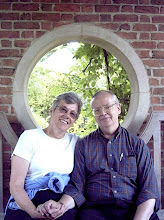Given all this, what are the possibilities for esotericism? I would suggest that the only chance of philosophers taking seriously anything within the esoteric tradition would be if the people in the esoteric tradition, that is to say the people making those claims, had experiences which were noetic and productive.
If we fail at knowledge, we fall back on belief. If an exponent of esoteric teachings, such as those of Swedenborg, asks the philosophic community, “Do you want to see our beliefs?” — and Swedenborgians can point to thirty volumes of them — such a question will be greeted by disinterest. Philosophy is expected to eschew beliefs. Faith and beliefs are thought to be left over from the Middle Ages.
Belief is what you do when you fall off or haven’t climbed the “high road.” The high road is for thinking; if you’re not on the high road of thinking and knowledge, you will not be effective in philosophical discussion.
Philosophy, in fact, is also full of unacknowledged beliefs, but we must know a lot about the philosopher’s presumed knowing to show that it is believing.
So it’s really uphill. You have to know Swedenborg, and then you have to know philosophy. In order to show that Swedenborg has a better philosophy than what’s out there; you have to have knowing experiences which could be the envy of philosophy. That is very hard to do. I’d like to do that, too, along the lines laid down by Rudolf Steiner’s Knowing Higher Worlds. We are all in this game together.
— Robert McDermott, “Whatever Happened to Esoteric?”, in Chrysalis, Vol. IX, Issue 1, pp. 42-43.
It holds me still. What mind — child’s or adult’s — what consciousness can bear to be known, beyond telling, the eyes had plumbed the child’s heart, the adult’s mind, as no human face or glance would or could.
Proposing that the religious essence lies in the encounter with “the holy,” Rudolph Otto sees the contact as essentially dual, instilling two attitudes at once within the participant. One he calls the feeling of awe, of dread, the mysterium tremendum, the energy that makes the self quiver and shake; the other he terms an attitude of attention, of fascination and interest, the mysterium fascinans, the energy that pulls the self on, and in, despite the terror, the dread, ever closer to the source.
Who can bear to be seen, totally and completely known? Who does not seek just such knowledge, such encounter and union? The little self withdraws in the face of such a knowing, shrinking and cowering, as the deep self, the larger self, draws near, recognizing in the presence of the threat of dissolution, and shattering, the source and origin of its deep life and creativity.
I write in a house that sits alone in a stand of holly, live oak, bay, and southern pine that wheeze and rush and sway with the storms that pound the coast from the North Atlantic. Tonight the wind is still, it is midsummer, and the moon hangs in its waning, two days past full. Yet even now, as this pencil tip scratches its stub point across the draft of this essay, there is in the silence of my breath, and these words, a force and mystery whose music and depth are one with that great, underground spring, a source beyond knowing or telling, beyond any accounting.
The Blue Hole feeds from and toward as source that is as nameless as it is endless. So, for the child, the story began. The child did not know the way then, no more than the adult does now. May it continue.
— Steven Lautermilch, “The Blue Hole of Castalia,” in Chrysalis, Volume IX, Issue 1, p. 48.
Subscribe to:
Post Comments (Atom)

No comments:
Post a Comment